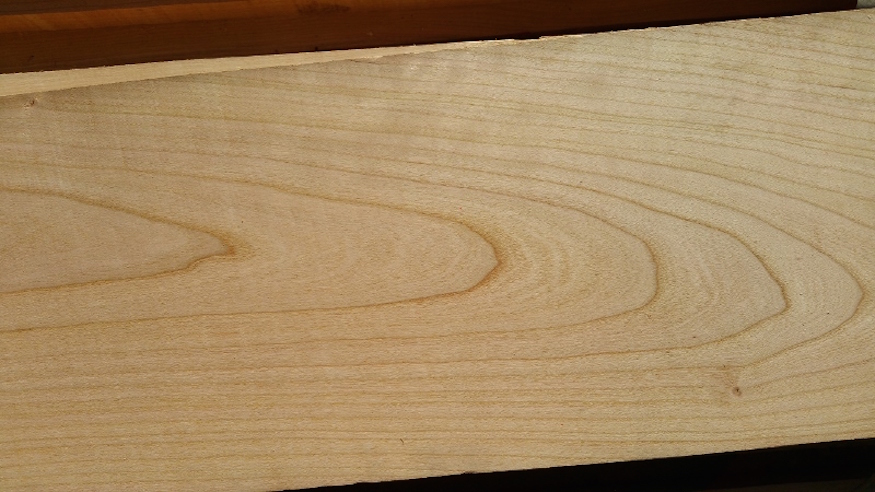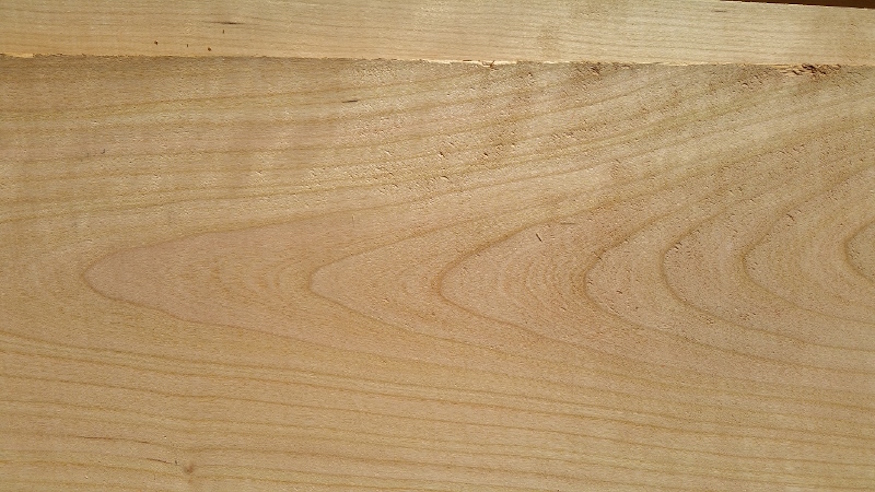What is Cherry?
Cherry typically comes from the Black Cherry tree which grows all across North and South America. However, the finest Cherry Timber comes from the Appalachian region.
Cherry wood is popular among woodworkers as it has a well-rounded combination of workability, color, and durability. It is considered to be more workable than both Maple and Oak.
Cherry wood, when initially cut, has a pinkish-tan color to it and tends to darken with age to a reddish-brown.
Why Chose Cherry?
Cherry is rather expensive, but its pros significantly out way its cons.
Cherry has a soft, warm color that is very appealing and the wood itself is stable, straight grained, and machines well. Cherry wood is typically used for cabinetry, interior millwork, design woodwork and fine furniture.

It is a durable wood and is rated for strong rot resistance. Cherry has a considerable amount of gum deposit or pitch. This shows in veneer as gum spots or streaks. In knotty or rustic grade furniture, this is almost black when finished, giving a truly authentic rustic appeal.
Using Cherry For Woodworking Applications
Cherry is soft and straight grained; this makes machining paneling and mouldings easy. Very little tear out will occur.
Cherry is excellent to finish. Beautiful both in a clear finish and a stain finish, it does not blotch or unevenly take stain. It oils beautifully as well, making it a great accent wood. Cherry is also an excellent choice because of its ability to resist rot.

Over the last ten years, cherry has become a staple wood in its appearance, yet virgin timber supplies are limited, and diminishing at a fast rate. This makes our job as woodworkers hard.
Most architects strive for long, clean “cathedraling” in veneer faces. That look comes from a tree that has had time to grow, “old growth timber.”
As the industry has tried to keep up to demand, they have planted replacement stock with new trees—not giving it the proper time to grow into large, old trees. This in turn has yielded timber that deviates from the classic Cherry look. Cherry has become more wild grained in nature. WHY? You might ask…
Picture a young cherry tree growing in today’s ever changing environment.
Physically it is not a large tree, therefore has not become a strong tree yet. It sways in the wind and its graining and natural fiber is flexible yet. It hasn’t developed the ability to resist mother nature’s affects.
Unfortunately for that tree and its timber, demand is high. It will be cut down before its fibers harden and its grain can straighten out, creating clean, long, fine character.
Contact D.P. Juza Woods & Fixtures today about pursuing a custom woodworking project using stunning cherry timber.